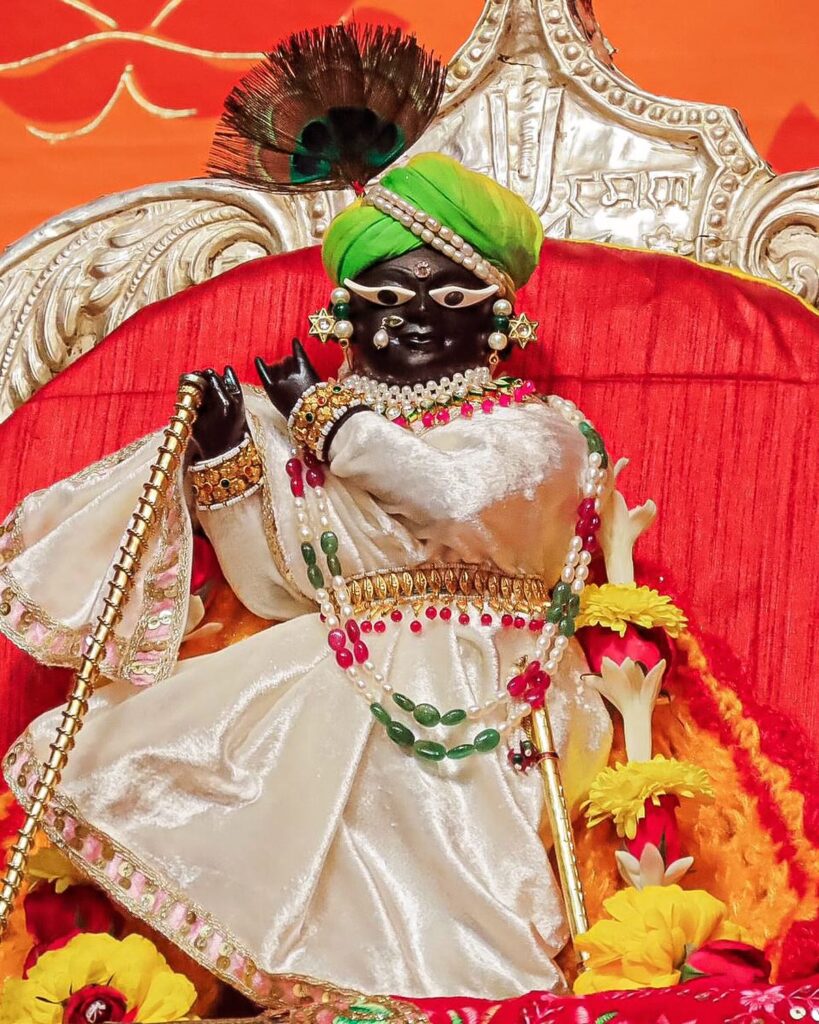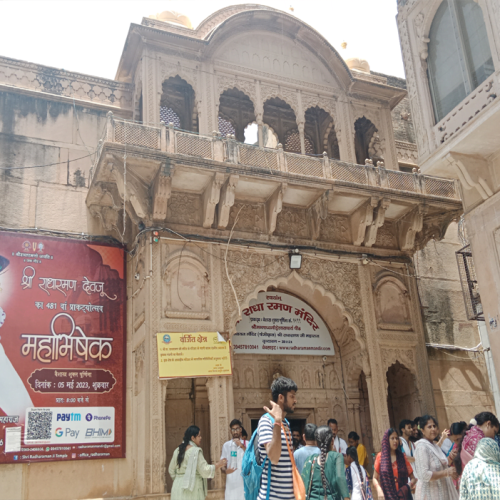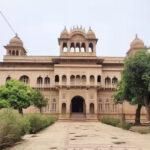Radha Raman Temple, the sacred abode of devotion to Radha, lovingly called Radha Raman. Over five centuries ago, this haven was established by Gopal Bhatt Goswami. Let’s delve into the enchanting tale of its origins.
Gopal Bhatt Goswami’s journey to Vrindavan at the age of thirty was marked by a profound longing for Chaitanya Mahaprabhu, who had departed. In a dream, the Lord offered solace, instructing Gopala Bhatta to seek His Darshan in Nepal.
Nepal became the canvas for a divine experience. Gopal Bhatt immersed himself in the Kali-Gandaki River, where a simple act astounded him. As he dipped his waterpot, Shaligrama Shilas, sacred stones, entered it repeatedly, defying the natural order.
Discovering twelve of these Shaligrama Shilas, Gopal Bhatt Goswami encountered a benevolent man in Vrindavan. This gentleman offered elaborate clothes and ornaments for the Shilas as charity. However, their round shape posed a challenge. Gopal Bhatt, wise in his devotion, suggested gifting them to another. The donor declined, leaving Gopala Bhatta with these offerings alongside his Shilas.
On the full moon day, after a heartfelt offering to the Shaligrama Shilas, Gopala Bhatta covered them under a wicker basket for a peaceful rest. The night held a surprise. Unveiling the Shilas the next morning, he discovered a Deity of Krishna playing the flute. The “Damodara shila” had transformed into the exquisite three-fold bending form of Tri-Bhangananda-Krishna. Thus, Radha Raman manifested as a perfectly shaped deity, believed by devotees to be alive. A chosen family had the honour of assisting in his daily schedule. The stone had transformed into the divine image of Sri Krishna, marking a poignant tale of realized Krishna-bhakti and emphasizing love as the central bond between the divine and human.

Now, let’s step into the present. Within Radha Raman Temple, the aroma of Prasad wafts from the kitchen, where male members of the Goswami families meticulously prepare offerings for Shri Radha Raman Ji. The temple’s kitchen fire, lit in its early days, continues to blaze, symbolizing an unbroken tradition. Goswami families follow a scheduled calendar for their personal seva (service) periods, extending invitations to disciples who join in the temple’s activities. Major family events and ceremonies are joyously celebrated within this sacred space.
The temple complex not only houses the divine image of Radha Raman but also serves as the final resting place for Srila Gopal Bhatt Goswami. Here, a treasure is preserved — the rarely available Unag vastra of Sri Chaitanya Mahaprabhu.
As we explore Radha Raman, the intertwined narratives of its inception and present-day practices unfold a tapestry of devotion and tradition. The sacred flame kindled in the temple’s early days continues to burn brightly, illuminating the path for devotees who gather to partake in the spiritual journey.
In summary, Radha Raman Temple is more than a temple; it’s a living testament to devotion’s enduring power. Join us in this spiritual haven where history, tradition, and divine presence converge to create an enriching experience for all who seek the embrace of Radha Raman’s eternal love.









